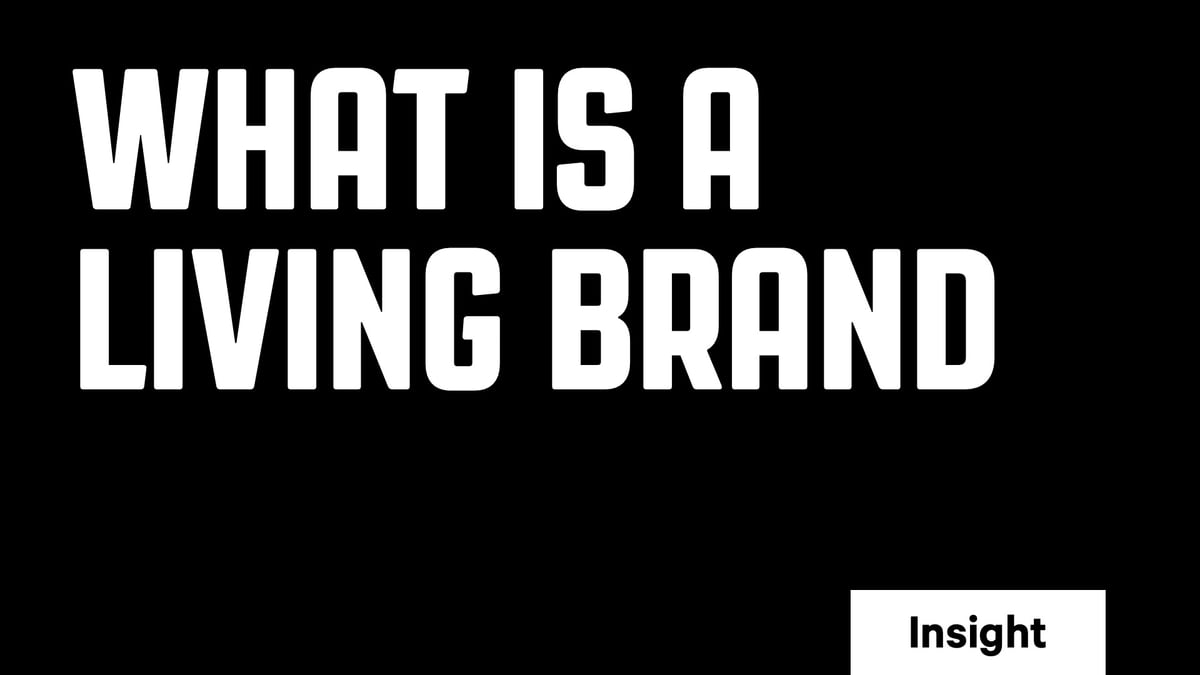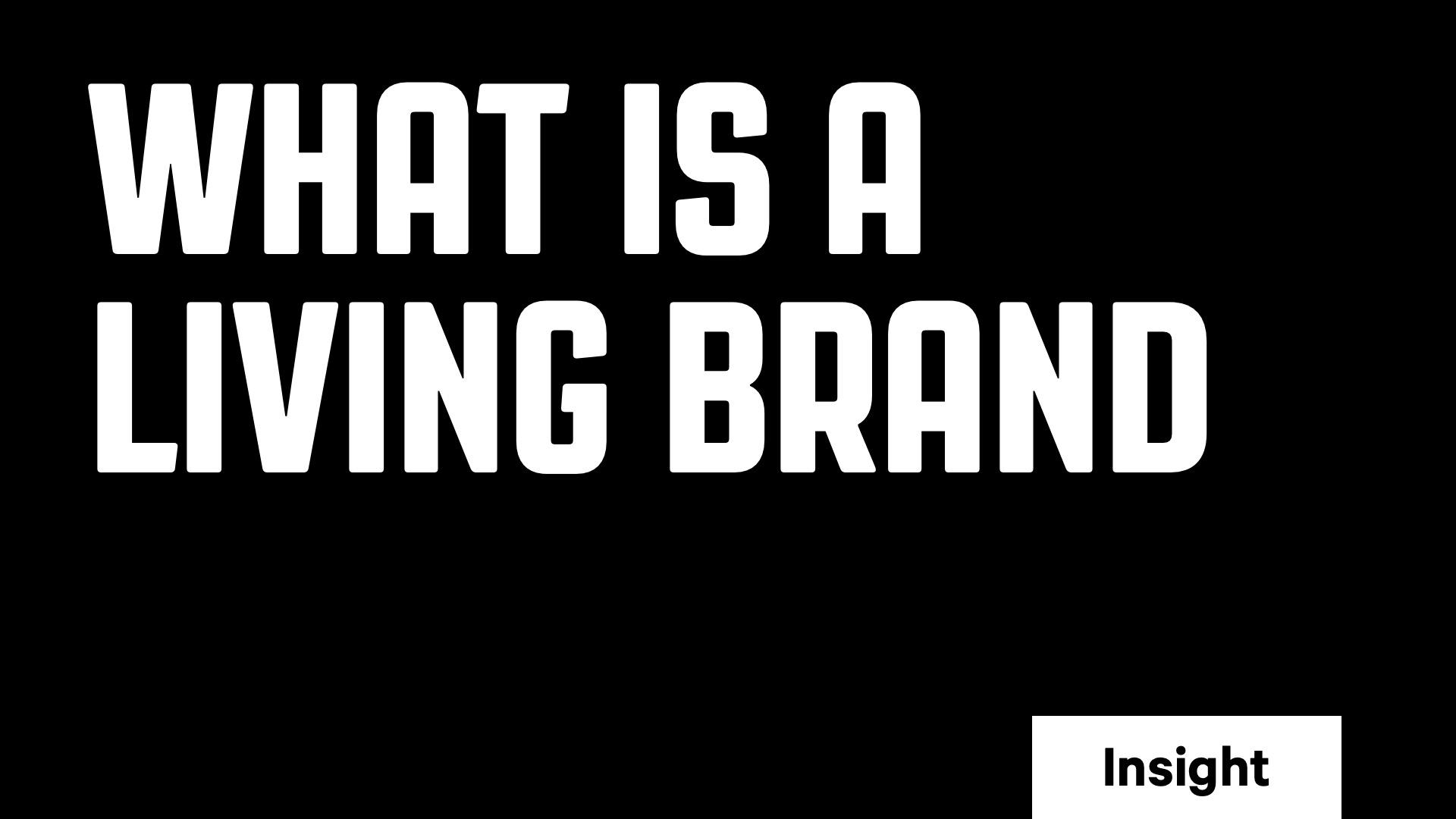What is a living brand?

When a brand reaches that point where it feels alive both for the people working within it, and those who interact with it from the outside, we say it has become a living brand. In this article we look at how a brand can reach this elevated status. The first step is to understand what a brand is.
WHAT IS A BRAND?
There are some pretty woolly definitions out there for what a brand is. Even the dictionary fails to usefully capture it. So let’s see if we can get a little more specific.
A brand is definitely not just a logo.
Your logo is one expression of your brand, for sure.
So is your website.
Your business card, your invoice, your PowerPoint template too.
So is your HR policy.
And your products, your services, your processes.
So is your culture and your communication.
As is your business strategy
Everything you do is part of your brand.
But a brand is more than that. A brand is the ideal, or promise, behind everything you do.
SO, WHAT IS A LIVING BRAND?
A living brand can be defined as the state a brand arrives at when the work that people do inside the business or organisation is consistent with the ideal or promise that the brand represents, such that those who interact with the brand from the outside experience the brand as it was intended. Or put more simply, a brand becomes a living brand when the idea of the brand becomes a real experience for people.
A brand becomes a living brand from the inside out, from an ideal, to your operations, to your people, to your customers and potential customers.
Once your team are living the brand, the products and the service they deliver will become natural expressions of your brand, giving your customers the experience you want them to have.
To become a living brand your brand needs three things: clarity, consistency and commitment.
Clarity
For your team to operate in accordance with your brand, your brand must be defined.
In detail.
No fuzzy logic.
No conflicting ideas.
It's useful to have some structure to work with to define your brand. We have, over the years studied, tried, tested, discarded and adapted many methodologies. The brand framework we now use offers a simple and powerful way to articulate what makes your brand unique. These are the elements of a robust brand framework:
- Back story - this helps you understand the how you got to where you are
- Purpose - this is the belief that's been running the show, perhaps without you knowing it. It is your "why?"
- Vision - describes the future state you're working towards, beyond any short or medium term financial goals
- Mission - identifies the task at hand right now that, if completed, will lead to the fulfilment of the vision
- Values - establishes your culture and codifies how you go about your business
- Messaging - sums up what your brand is about in headlines and straplines for your communications
- Identity - the visual manifestation of your brand through its logo, typefaces, colourways and imagery.
Once defined, the brand framework is your brand’s true north, a constant guide and reference for the business.
Consistency
For people's perceptions to align with your brand framework, the same brand experience has to be delivered time after time. From the way you portray your brand visually, to the way you speak, to the quality of your product or service, to the way they’re packaged up and delivered, to the customer service you provide along the way.
One simple way to deliver that consistency, and build trust, is to have all your brand touch points - like your website, collateral, stationery and templates - designed as a suite from your identity. You'd be amazed (or perhaps not!) how often this isn't the case. It's also useful to have a style guide or brand guidelines produced so that your team can deliver that consistency themselves in-house.
Commitment
For a brand to become a living brand requires commitment from the very top of the business to actively drive the brand framework through every part of the business - whether that’s converting your brand values into a set of behaviours that form part of your performance reviews, or briefing your people to develop products and services that will advance the brand’s purpose, or redesigning your office to reflect your brand's character. By doing so, the leadership are setting up the business so that it runs on strategic rails that will lead to long term success. In effect it's not so much that the business runs the brand, but rather that the brand runs the business.
Commitment also extends to ensuring that you keep reinforcing your brand through regular engaging communications, both with your team and with the market. The aim is to carve out and keep a top spot in their hearts and minds, so that they think of you when they need something or are asked for a recommendation.
WHY BOTHER BUILDING A LIVING BRAND?
Take a look at the businesses you admire. The perception you have of them will almost certainly closely mirror the idea they have of themselves. Every department, every process, every role will have been filtered through a brand framework, so that everything becomes an authentic expression of it. Yes, it takes a bit of time and money to make it happen. But we believe no business can achieve its full potential without it. Not just the potential to grow the lifetime value of your customers, but the potential for your brand to live beyond the people who established it.
For more information contact the Free team at hello@freepartners.com.
